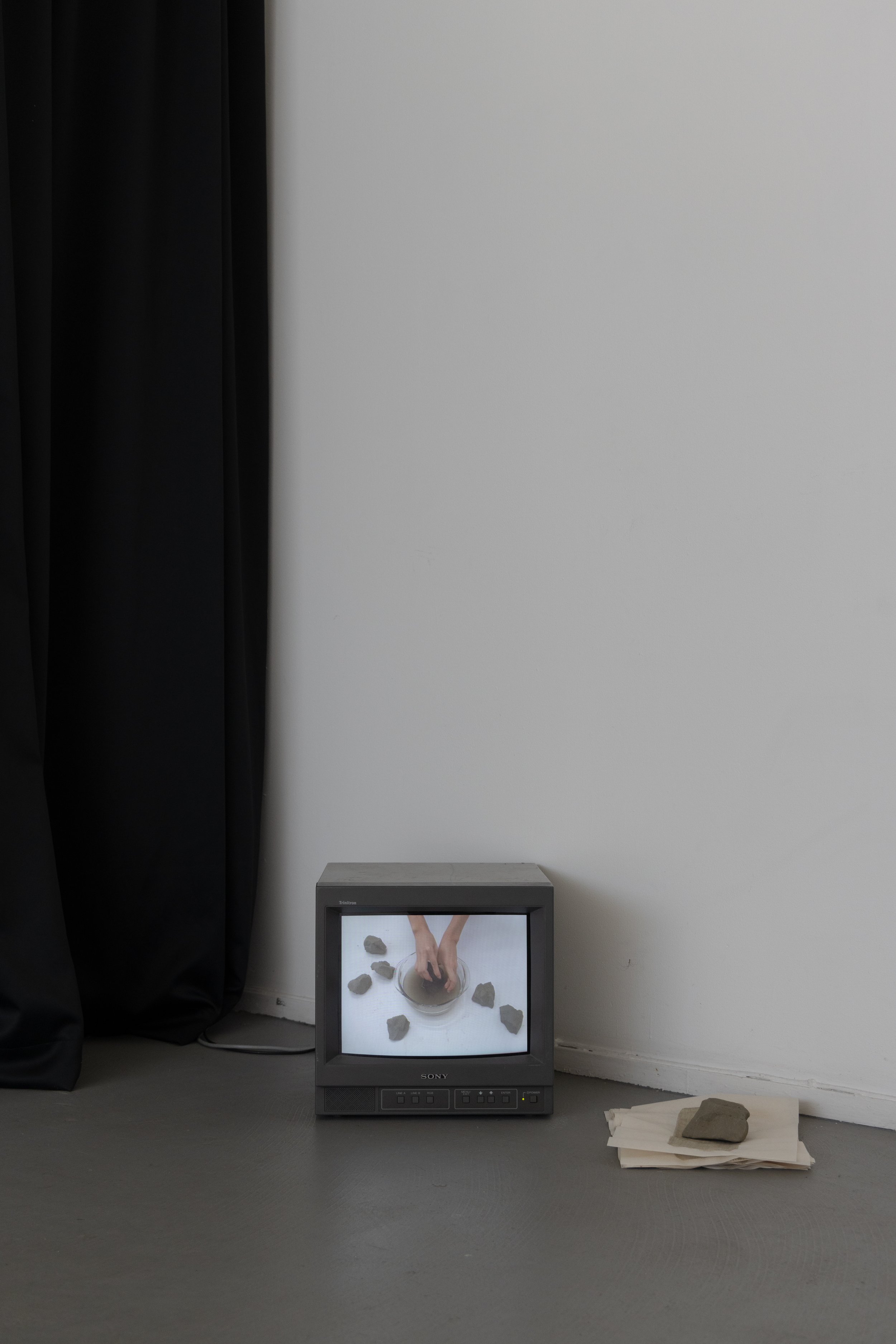Notes On: Ruffles
Connie Brown on Prairie Hatchard-McGill’s Signature Print; Neo Gracie.
The loveable does not rank highly on the aesthetic ladder; it wanes somewhere near its lower-middle, next to the sentimental and the folk, and everything else that reveals its attachments to things, people, time and place too earnestly. Distance is presupposed within aesthetic experience, meaning we should be moved and compelled by art, but not necessarily enfolded by it in the way that the plush bed at the centre of Prairie Hatchard-McGill’s exhibition Signature Print proposes to enfold us.
The bed has a satin tufted headboard, a dust ruffle, and an elaborate arrangement of pillows, the front-most one heart-shaped—all hand-dyed with vegetable matter by the artist and sewn by her mum. It is pink and very puffy, and tempting to read as an example of the ‘cute’ object, described by Sianne Ngai as something “with no edge to speak of … and deeply associated with the infantile, the feminine and the unthreatening.”[i]
Part of the cute object’s appeal, Ngai writes, is that it addresses its viewer as a protector or carer, and positions itself as an object “in search of its mother.”[ii] The cute’s plea for care endears itself to the viewer, but not without precipitating “a touch of disgust” for the pathetic, needy thing.[iii] The objects in Signature Print are cute, but they also seem to offer protection and care to their viewer. If they also prompt Ngai’s ‘touch of disgust,’ it would be for the thing that needs to be needed.
None of the exhibition’s affects is straightforward. Each is limned with another, in a heady concoction of contradictory feelings, attractions and repulsions. The arrangement of rose petals, foil-wrapped walnuts, decoupaged eggs and tiny furniture made from the muselets of champagne bottles along a mantel piece, moulded to the gallery’s wall, is at once tender and obsessive—the handiwork of infatuation bred in boredom. And the bed, so extravagant and carefully composed, though it suggests comfort, also invokes the commodity form of the department store display bed, and with it the unease of compulsory heterosexuality and housewifeliness.
Like the cute thing (and any expression of traditional femininity), Hatchard-McGill’s installation trades in equivocal feelings that “put interesting new pressures on the theory of aesthetic judgments in general.”[iv] Why does the enfolding gesture or the lovable object disgust us? Probably because it is hopeless and forlorn and not cooly detached or distantly beautiful as the aesthetic thing should be; and probably also because it reflects something hopeless and forlorn in its viewer, a desire to be cared for and doted upon and to curl up in the pink blankets dreaming forever.
Footnotes
[i] Sianne Ngai, Our aesthetic categories: zany, cute, interesting, (Harvard University Press, 2012), 59.
[ii-iii] Ibid., 60.
[iv] Ibid., 57.
All images: Prairie Hatchard-McGill, Signature Print, 2022. Installation view, Neo Gracie, Tāmaki Makaurau, September 2022. Photography: Sam Hartnett
Prairie Hatchard-McGill, Signature Print, 2022. Installation view, Neo Gracie
Prairie Hatchard-McGill, Signature Print, 2022. Installation view, Neo Gracie
Prairie Hatchard-McGill, Signature Print, 2022. Installation view, Neo Gracie
Prairie Hatchard-McGill, Signature Print, 2022. Installation view, Neo Gracie
Prairie Hatchard-McGill, Signature Print, 2022. Installation view, Neo Gracie
Prairie Hatchard-McGill, Signature Print, 2022. Installation view, Neo Gracie


















Connie Brown on Zoe Thompson-Moore’s Open-field; RM Gallery, 23 November - 17 December